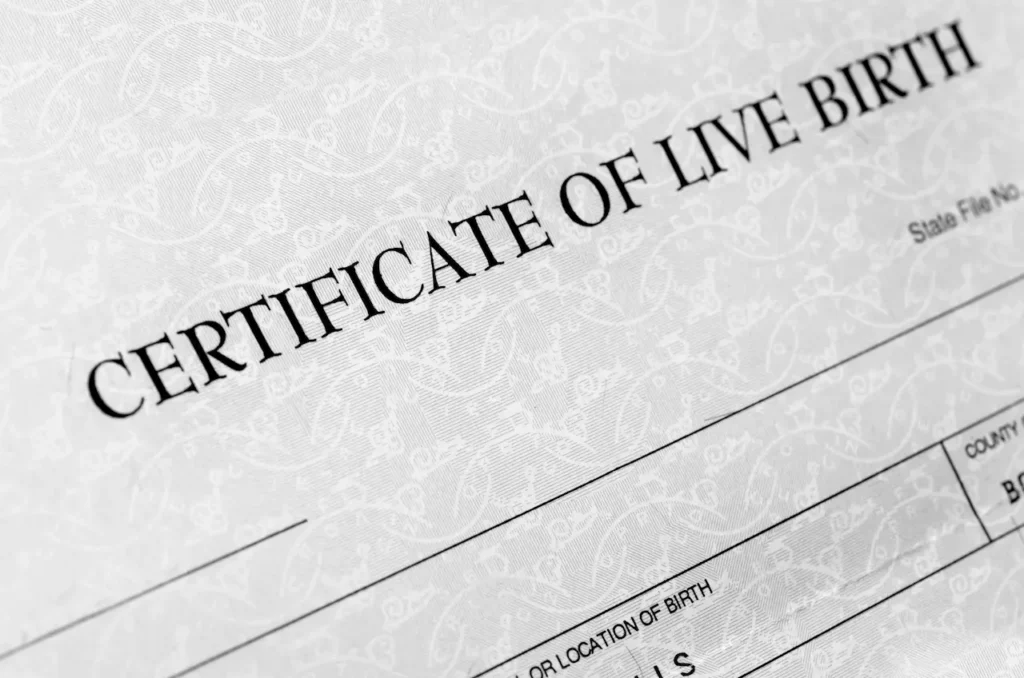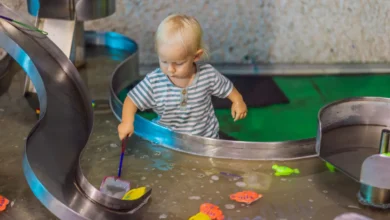1. Medicare Set Up: The First Task
The very first administrative task you’ll face as a new parent is setting up Medicare for your baby. It’s not glamorous, but it’s essential for claiming medical and health expenses. You’ll receive a form for this at the hospital, and while it might seem straightforward, there’s a bit of a catch: you’ll need to choose your baby’s name before proceeding with the paperwork. Sounds simple, right? But naming your newborn is often a decision fraught with endless discussions, compromises, and last-minute changes.
Once you settle on a name, you can complete the Medicare paperwork, which will then allow you to claim medical expenses for your little one. While it’s not the most thrilling task, it’s the gateway to getting your child the health coverage they’ll need for the coming years.

2. Birth Registration and Certificate
Did you know that registering your child’s birth is a legal requirement? It’s true. After the birth, you’ll need to register your baby with the government. This can be done at the hospital, and you have 60 days to complete the process. Don’t worry about rushing, there’s no need to panic. The hospital will provide you with the necessary form, which your doctor must sign to confirm the birth.
Once the registration is complete, you’ll also need to purchase a birth certificate. This document will come in handy for all sorts of situations later on, such as enrolling your child in school or applying for passports. While the process is relatively simple, be prepared to pay a small fee, typically around $56, for the certificate. The name you choose for your baby will be permanently tied to this official document, so be sure to make your decision before proceeding.
3. Centrelink Number
If you’re in Australia, you’ll quickly find that Centrelink, the government agency responsible for providing financial assistance, will be part of your post-birth admin duties. One of the first things you’ll need to do is obtain a Centrelink customer reference number (CRN) for both yourself and your baby. You’ll use this number to claim government benefits such as maternity leave, childcare rebates, and other essential services.
The process involves calling Centrelink, which means you’ll be on hold for what feels like an eternity. So, it’s wise to have your phone on speaker mode while you wait or, better yet, head to the branch in person to complete the task. The wait can be long, but it’s an essential step in getting the financial support you may need during the early stages of parenthood. There is an online system and app through MyGov that connects to Centrelink, so once you’ve got your CRN, make sure to save your login details and passwords to streamline future claims.
4. Passport
At some point, you may find yourself needing a passport for your little one, especially if you plan on taking a vacation or traveling abroad. While some parents will never need to deal with this particular piece of paperwork, for those who do, it’s a time-consuming and often frustrating process.
The passport application for a child is a multi-step ordeal. You’ll need to take a photo of your baby (a feat in itself, getting a perfect passport photo when your baby can’t keep their eyes open and has no concept of “smiling” can feel like an impossible task). You’ll also need to fill out the application form and get a guarantor’s signature, which can be more challenging than it sounds. A minor mistake, like submitting the wrong size photo or not signing in the correct box, can result in your application being rejected.
The cost of a child’s passport is typically around $139, and it’s only valid for five years. That means if you plan to travel frequently, you’ll have to go through the passport renewal process every few years, which means even more paperwork. But hey, at least you’ll have a photo of your baby for the travel scrapbook!
You might also like: What to Pack for You and Your Baby?
5. Immunisations: A Necessary Hassle
Vaccinations are crucial for protecting your baby from harmful diseases, but managing your child’s immunization schedule can feel like a full-time job in itself. The first vaccinations typically happen right after birth, so you’ll be out of it and may not even remember it happening. After that, it’s your job to ensure you show up for all those follow-up appointments at two, four, six, 12, and 18 months of age.
One essential piece of the immunization process is the Blue Book, a small but mighty document in which you record your baby’s medical history, vaccinations, and growth milestones. Don’t forget to bring it with you to the doctor’s office—missing a vaccination can lead to delays, and you certainly don’t want to put your baby at risk.
The best way to stay on top of this task is to schedule all the appointments well in advance and save the dates on your phone’s calendar. While this won’t make the doctor’s visits any less exhausting, it will at least make sure you don’t forget a critical vaccination.
6. Childcare and School: Form Overload
As your baby grows, the administrative tasks only multiply. One of the biggest hurdles is finding childcare or preschool. If you plan to return to work, childcare becomes a necessity, but spots in reputable daycare centers often come with long waitlists. Be sure to register early to ensure you have a spot for your little one.
Once you’ve secured a place for your child, the paperwork doesn’t stop. From emergency contact information to your child’s medical history, the forms keep coming. If you plan to send your child to a private school, get ready for even more forms, fees, and requirements. Many schools require a significant amount of paperwork to reserve a place, including a signed contract, payment, and additional forms.
And then, of course, there’s the ongoing paperwork throughout their education. Parent-teacher meetings, permission slips for school outings, and health forms for extracurricular activities all of this will continue for years to come. The sheer volume of forms and deadlines can feel never-ending.
You might also like: Raising Kids Without Grandparents
The Beginning: Embrace the Admin Journey
Once you’ve navigated the major administrative tasks in the early stages of parenthood, you might think things will slow down. Spoiler alert: They won’t. Baby and child-related admin will be a constant companion for at least the next 18 years. From medical check-ups to school projects, there’s always some form to fill out or an appointment to schedule.
As your child grows, you’ll need to stay organized and be prepared for the never-ending stream of forms and procedures. If you’re lucky, you’ll have some sort of family assistant (or at least a helpful partner) to keep track of things, but ultimately, it’s a lot of work, and it’s all on you.

Five Things Every New Parent Must Do Before Their Baby Arrives
The birth of a child is an exciting and life-changing experience. It’s normal to be excited and nervous as a first-time parent. We’ve created an extensive list of things to do for your newborn baby.
1. Install the Nursery
A safe, functional, and comfortable nursery should be a priority. Set up the space below to accommodate all of your newborn baby’s needs. Make sure the room has a comfortable atmosphere and is safe. Consider blackout curtains to improve your sleep.
- Crib: Make sure that it meets the current safety standards
- Changing table: A space dedicated to changing diapers.
- Storage bins or drawers to store clothes, diapers, and toys.
- Rocking Chair: for soothing and feeding.
Create a calm and functional nursery to help you and your child feel more relaxed. A secure crib will ensure that your baby can sleep soundly. An organized changing table will make diaper changes easier. You can keep your nursery clean and clutter-free by having enough storage.
Rocking chairs are a great way to soothe and comfort your baby during feeding sessions. They also strengthen your relationship with your child. Make it personal by adding a few touches. Consider the room’s overall ambiance.
Consider installing a dimming switch or choosing lamps that emit a soft, warm glow for diaper changes and nighttime feedings. Decor adds a personal touch. However, make sure that they are out of reach and safe for the baby. The ambiance of the room can be enhanced by using soft colors and adding a few decorative elements, such as wall art or mobiles.
You might also like: Laughing at the Thought of a Baby Routine
2. Stock Up on Baby Essentials
Stock up on essentials such as these before your baby’s arrival:
- Diapers & Wipes: A variety of diaper sizes, since newborns grow quickly. At least a few weeks’ worth of supplies.
- Baby Clothes: Onesies and Sleepers.
- Toiletries: baby shampoo, lotion, and diaper cream.
- First Aid Kit: Baby nail clippers and infant acetaminophen.
Prepare these items to help you with daily tasks such as changing diapers and dressing your child. A well-stocked diaper supply will save you from last-minute trips. A first-aid kit that includes baby-specific products allows you to quickly address minor health issues.
Choose fabrics that are soft and breathable. They will be easy to wear and remove and will keep your baby comfortable. Choose onesies that have snap closures to make diaper changes quick. Baby mittens will also prevent your child from scratching the delicate skin.
To prevent irritation, use gentle materials on newborns. Consider the weather when choosing clothing for your baby. You will be prepared for all situations if you have a variety of clothing options.
Additional Points to Consider
- Swaddle blankets: Make your baby feel more secure and help him sleep better.
- Diaper Bag: Pack essentials in this bag for trips.
- Bottle Heater: A convenient way to warm milk or formula.
3. Choose a Pediatrician
It is important to choose a pediatrician for your child before birth. You should visit and research potential pediatricians to find one you feel comfortable with and trust. You should also consider their approach to newborns, recommendations from other parents, and the following factors:
- Location: The location of your home.
- Credentials Board certification and experience in newborn care.
- Availability of Office hours and After-hours Care
You can have peace of mind knowing that the health of your child is in capable hands when you choose a pediatrician. You will be visiting your pediatrician frequently to monitor the growth and development of your baby during its first year. A convenient location is therefore essential.
It is important to understand the approach of your pediatrician to ensure that you are comfortable with their parenting style. Ask about the communication methods of your pediatrician. Some doctors provide virtual consultations, or you can call a nurse line to ask questions.
It is important to know how accessible your pediatrician is. This will affect how you feel supported as a parent. Before making a decision, it’s best to speak with several pediatricians. Policies. Ask them questions about their office, their policies, and their approach to emergencies.
You can then determine if they are compatible with your parenting style.

4. Find Out About Feeding
Prepare the necessary supplies to feed your baby either breast milk or formula. Include these essentials for feeding your newborn baby on your to-do checklist:
- Breastfeeding: nursing bras, breast pumps, and storage bags
- Formula Feeding: formula, bottles, and sterilizing equipment.
- Burp Cloths: Keep you and your baby clean during feeding sessions with burp cloths.
Understanding the basics of feeding your newborn will ensure that your baby receives the nutrition he or she needs to thrive. Establish a routine for feeding and latching your baby if you decide to breastfeed. Lactation consultants offer invaluable advice and support to help you overcome challenges.
The right supplies, such as nursing bras or a breast pump, can make your experience more efficient and comfortable. Select the formula and equipment needed for formula feeding. To maintain hygiene, ensure you have enough bottles. Also, use a method that is reliable for sterilizing them.
Burp cloths will keep both you and your child clean during and after feeding. No matter what method you choose, make sure to create a comfortable and calm environment for your baby. It doesn’t matter if it is a quiet corner of your nursery or a cozy area in your living room. Having a designated space will make feeding time more enjoyable for both you and your child.
5. Prepare for Sleep
Sleeping is a common activity for newborns, but it’s usually short. Include these tips on your list of things to do for a newborn baby:
- Sleeping Environment: Dark, quiet, and cool.
- Routine: Create a routine for bedtime that includes calming activities.
- Safety: Use safe sleep guidelines to lower the risk of SIDS.
For your baby’s safety and comfort, you should provide a comfortable sleeping environment. The firm mattress in the crib will provide support and keep the crib clear of blankets, pillows, and toys, reducing the chance of suffocation. To help your baby sleep better, create a cool, quiet room.



